How to choose a cauldron?
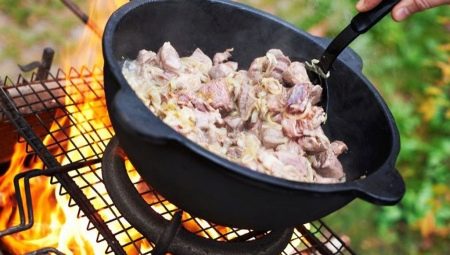
Kazan is an integral part of Eastern culture. Without it, it is impossible to imagine the preparation of proper pilaf, shurpa, lagman and many other dishes of Central Asian cuisine. How to choose a cauldron for home use? Is there a difference between cookware made from different types of metal?
To find answers to all these questions, it is worthwhile to study in more detail the features of this type of cooking container. In addition to the classic models, there are hiking bowlers with a rounded bottom, models with a duckling function or woks used in Southeast Asia. They all have advantages and disadvantages.
In order to get a good result in the cooking process, it is worth approaching the choice of a cauldron as responsibly as possible.
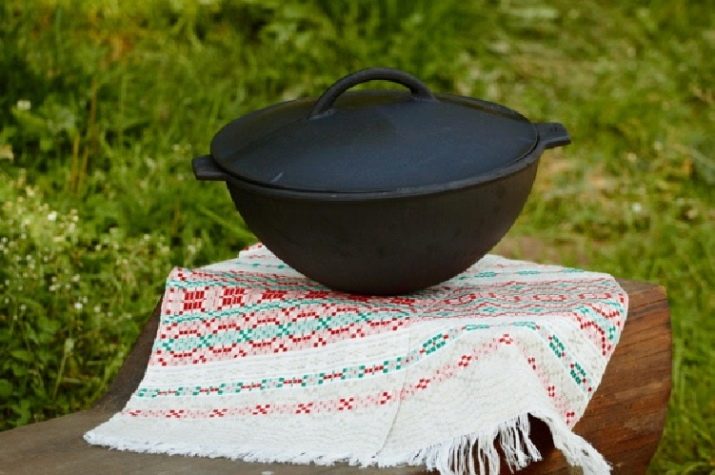
How to determine the shape and size?
When choosing a cauldron for cooking oriental dishes, you should pay attention to the size and shape of the product. It is these factors that determine how many servings can be prepared at a time and which cooking methods can be used. How to understand which cauldron is better: with a round bottom or a flat one? Does the family need a 10-liter option, or is a five-liter one enough?

It's worth starting with the size and capacity. Orientation to the following proportions will help to choose a cauldron: 1 liter of volume per person. That is, for a big holiday, it is better to stock up on the most capacious 12-liter version. But for a family dinner, there is enough capacity for 3-5 liters. In an ordinary home kitchen, it is inconvenient to use dishes over 8 liters, it is difficult to reach the desired temperature.
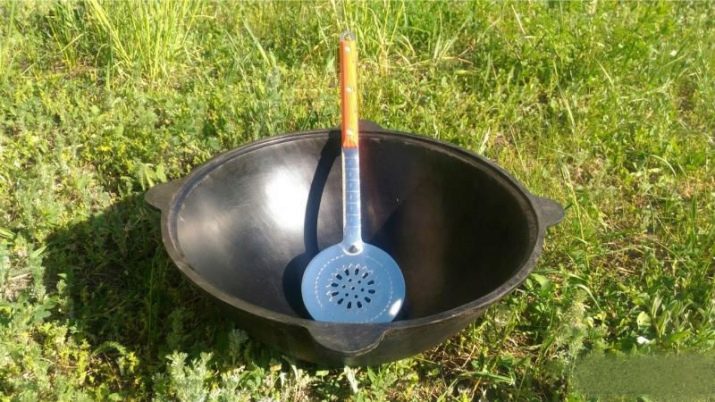
For a summer residence, a country house where there is an open hearth, you can purchase models with a volume of 18–20 liters. They are most convenient for preparing pilaf for a large company, they are massive, complemented by heavy cast lids.

The shape of the cauldron depends on the method of cooking. The classic version, used in Asian countries, has a hemispherical shape and resembles a giant bowler hat. It can only be used on coal or wood-burning stoves with special grooves or complete with a tripod on which the container is located.
It is the hemisphere that ensures uniform heating of the ingredients located inside, facilitates easy mixing of the dish.

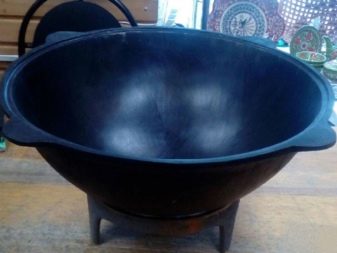
In a typical kitchen, utensils with a rounded bottom cannot be used. Here they use specialized cauldrons with a flat bottom - it can be connected to the classic version and look like an adapter stand. This is exactly what woks are supplied with for home use.
In addition, the so-called cauldrons-pots with a flat bottom, round or oval shape, ducklings are produced, allowing to ensure the correct preparation of food on an electric or gas stove. Available for induction cookers special product lines with a ferromagnetic disc at the bottom.
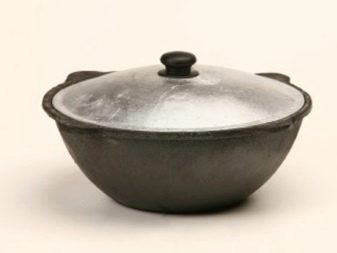
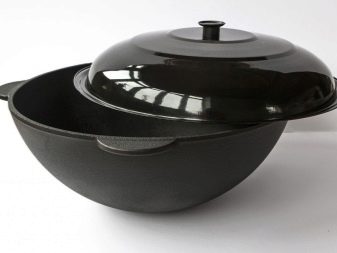
What material should you choose?
The correct choice of a cauldron begins with the determination of a suitable material. Today, utensils for cooking pilaf and other oriental dishes are produced under factory conditions, using casting or stamping methods. The second method is used mainly when creating budgetary or camping utensils, for which light weight is an advantage. Cast aluminum and cast iron cauldrons are thick-walled, durable, do not have connecting seams.
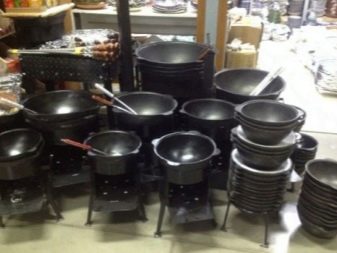
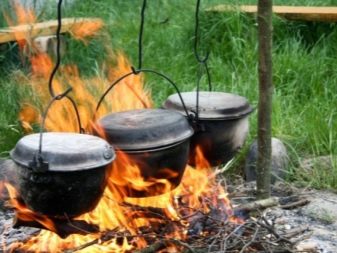
Cast iron cauldrons
The most popular option for pilaf dishes is cast iron. This alloy is distinguished by the ability to retain heat for a long time, has a porous surface, as the dishes are used, they are soaked in oil and undergo additional hardening.
How to choose the right cast iron cauldron? First of all, it must be massive and heavy - the metal weighs a lot, and the thicker the walls, the higher the weight of the product.
A good cast-iron cauldron has a hemispherical shape and allows you to cook dishes with a multi-layer composition, ensuring optimal heat treatment for all ingredients. Food does not burn in it, languishes for a long time, gradually saturated with bright, rich tastes and aromas. The wall thickness of a good cast iron cauldron should be more than 0.5 cm; for electric and induction cookers, it is better to purchase models with a flat bottom.
But do not forget that strong metal turns out to be fragile under shock loads - if you drop the container for pilaf, it can be split.

Aluminum cauldrons
Aluminum-based alloys are also very popular in the manufacture of cauldrons. Cast metal containers have thick walls, are durable, and weigh less than their cast iron counterparts. Traveling aluminum cauldrons are more reminiscent of bowlers and are most often made by stamping. For aluminum cauldrons, higher requirements for the choice of temperature are characteristic; in the absence of a special coating, food can burn.
A special film forms inside such a container as it is used, which prevents the oxidation process. But you should not store food in such a container for a long time. Aluminum cauldrons are not suitable for use with induction cookers.
The applied non-stick coating helps to increase their properties and reduce the risk of food burning.

Copper cauldrons
The copper cauldron, classic for the countries of the East, can be found today in China and India. Its production is most often done by hand - such dishes are not made on an industrial scale. A copper brazier has thinner walls, heats up faster. This factor is not very good for pilaf and other dishes. But it is suitable for use as a container for the preparation of many meat dishes, poultry.
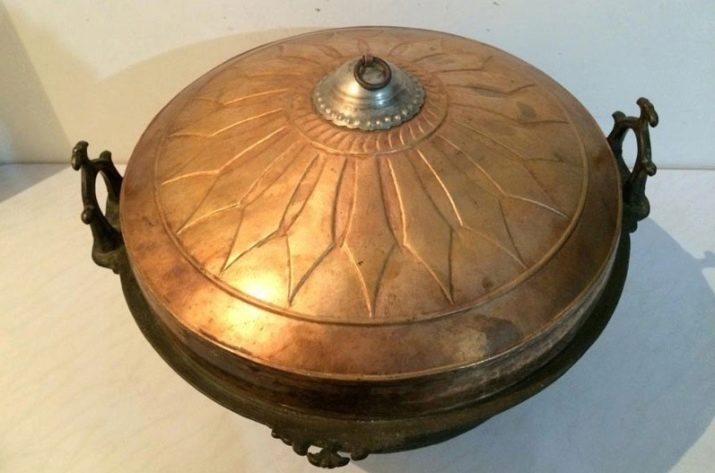
Cauldrons made of steel
European manufacturers do not value cast iron too highly as a material for making dishes. Most often the cauldrons here are made of stainless steel, coated with enamel or a special non-stick composition.
Premium products are ceramic coated. Cauldrons of this type are similar to cast iron only in shape - in fact, it is a saucepan or brazier used for stewing in the oven. Often this solution is used as a duck.
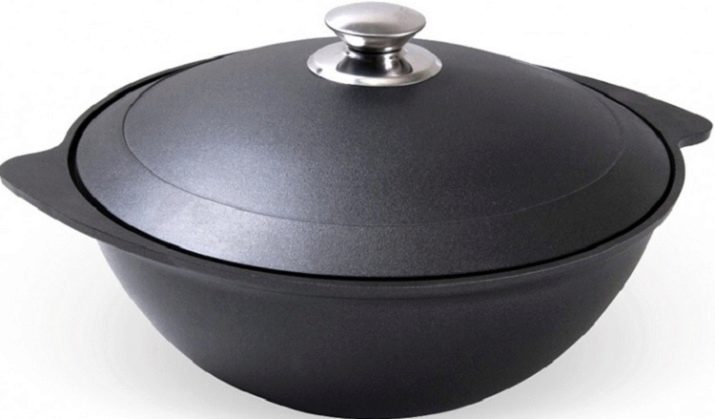
How to choose the type of plate?
For wood and coal stoves with top-mounted burners, a classic cauldron or WOK with a rounded bottom is still the preferred option. Here, the heating intensity can be adjusted by varying the number of placed rings. In addition, there are special wok adapters used on conventional open fire stoves.
But more often than not, in order to properly cook pilaf or other types of Central Asian dishes, you just need to purchase a special version of the cauldron. For a gas and electric stove, the most common version with a flat bottom is suitable. But for induction hobs, we choose special models with a bottom made of a ferromagnetic alloy.
Cast iron and steel options are suitable, and woks are available that are adapted for this heating method.
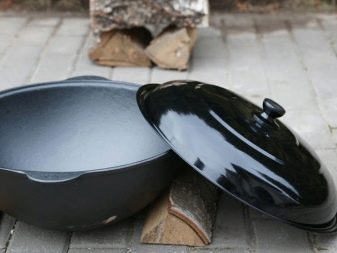
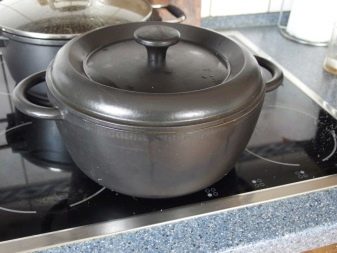
Manufacturers rating
Russia has its own manufacturers producing high-quality and durable cauldrons. Nevertheless, products made in the territory of Central Asia, where this type of tableware is traditionally popular, are considered canonical. When choosing and buying, you should pay attention to the name of the company - the most famous brands are increasingly being counterfeited. A production located in China is a good reason to refuse to purchase a cauldron, it is unlikely to be of high quality and durable.
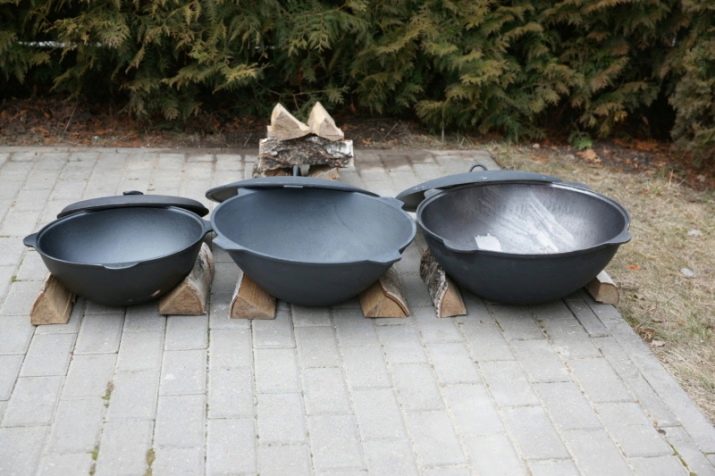
Among the firms that deserve attention are the following.
- Kukmara. Russian nonsense from Tatarstan, producing woks and cauldrons from cast iron or aluminum casting. The products differ in a variety of sizes, medium volumes - from 4 to 12 liters, thick walls and excellent workmanship. The plant is well known in the CIS countries, the prices for products are average in the market. There are also modern models with a non-stick coating in the range.
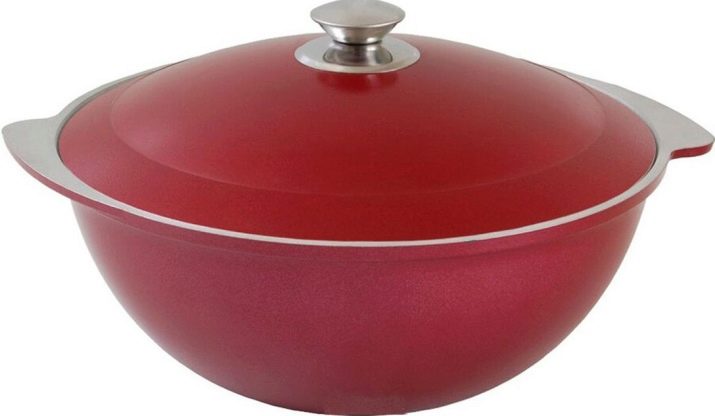
- VARI - a Russian brand that produces a series of LITTA: cast cookware with a non-stick coating, which is applied by spraying. The company has a modern line of equipment for creating a reliable and safe protective layer.
The products have a lot of advantages, including modern design and affordable prices.
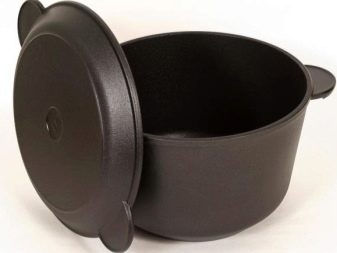
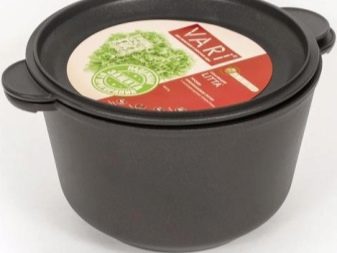
- Mayer & boch - a German manufacturer producing cauldrons with a glass lid, as well as enameled cast iron models. There are also modern series of aluminum cauldrons with glass-ceramic coating. The range of products includes cauldrons, pots, cauldrons, ducks, versions with a grid for steaming. The price range of products can be attributed to the budget category.
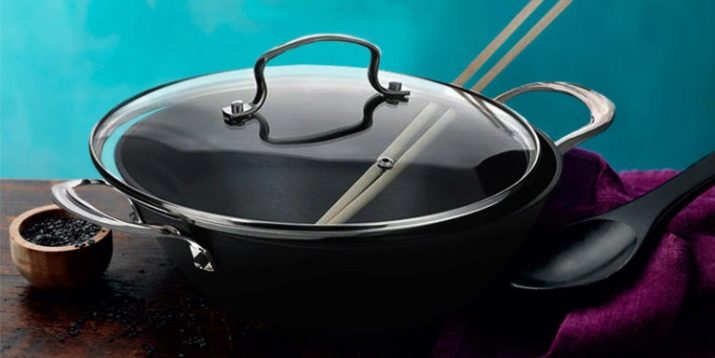
- Forester - products of the Upeco company from Russia. A distinctive feature of the brand are branded cauldrons with lids-pans and cauldrons-woks made of cast iron. The models are adapted for use on electric and gas stoves, open fire, durable, the price is slightly higher than average.
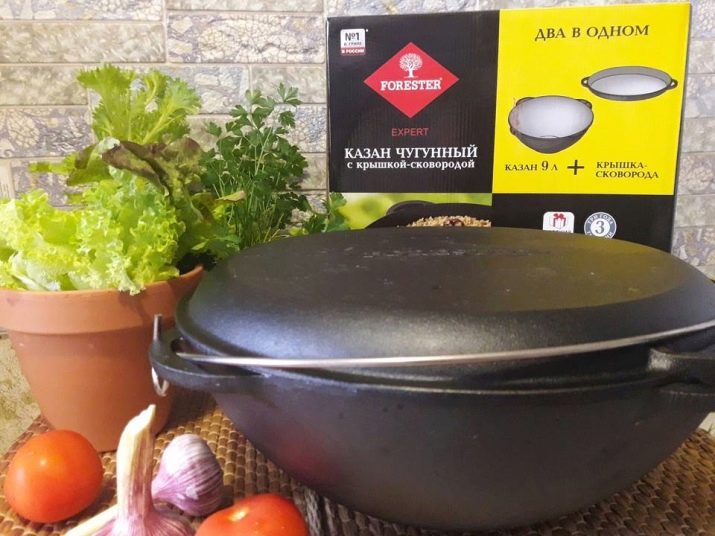
- "Kama dishes". The enterprise produces mainly cast iron cauldrons with aluminum lids. The assortment includes products of different capacities, with a thick bottom and walls. Massive cookware looks solid, lasts a long time, is made by casting. But such cauldrons require preliminary preparation for operation, and are not cheap.
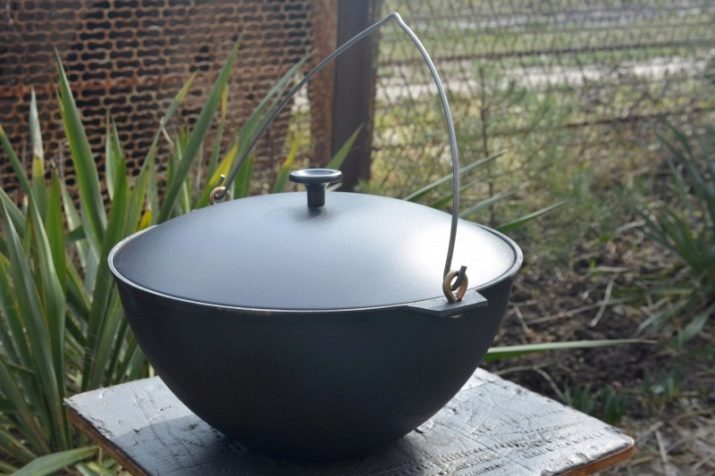
In addition, in the North Caucasus and Tatarstan, you can find many private industries, where cauldrons are created, focused on the correct preparation of oriental cuisine. The price for them is often very low, but this factor does not affect the quality of the product in any way.
For those who prefer cast-iron cauldrons, the options produced by the Russian manufacturer will be interesting. "Balezino", the Belarusian Polotsk plant. The production of high-quality utensils for pilaf has also been established in Ukraine. The Ecolit plant stands out here, producing products with a quality close to that of premium European brands.
If we talk about professional cooking, the leadership is consistently held by the cauldrons of the French firms Le Creuset, Staub.
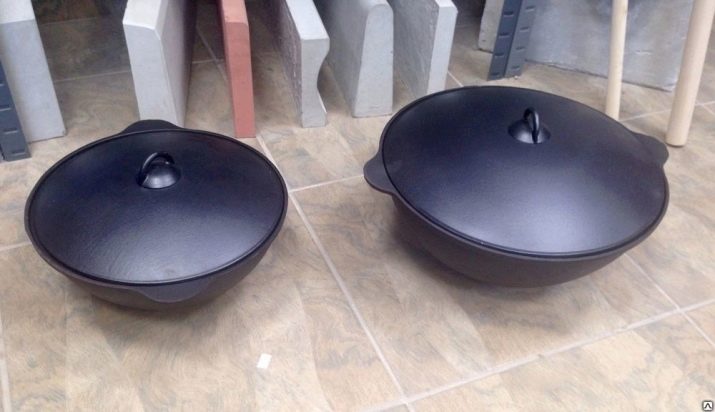
For tips on choosing a cauldron, see the video below.








